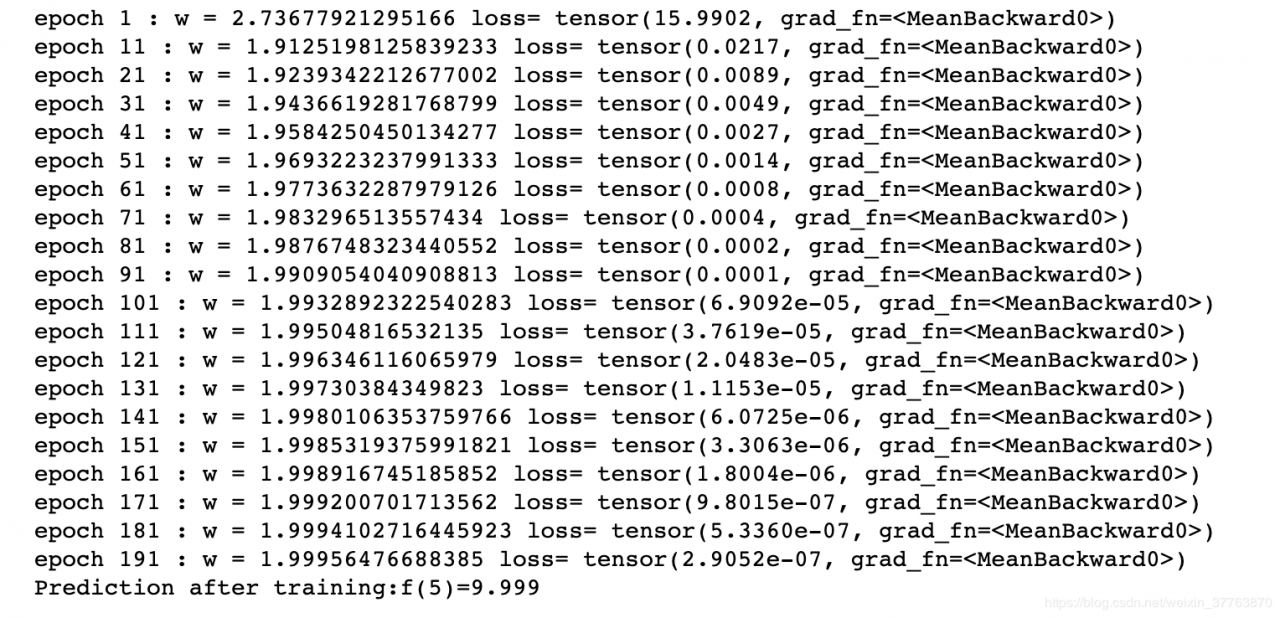Pytorch专题实战——线性回归(Linear Regression)
文章目录1.计算流程2.Pytorch搭建线性回归模型2.1.导入必要模块2.2.构造训练数据2.3.测试数据及输入输出神经元个数2.4.搭建模型并实例化2.5.训练
1.计算流程
作者:程旭员
1)设计模型: Design model (input, output, forward pass with different layers)
2) 构建损失函数与优化器:Construct loss and optimizer
3) 循环:Training loop
- Forward = compute prediction and loss
- Backward = compute gradients
- Update weights
2.Pytorch搭建线性回归模型
2.1.导入必要模块
import torch
import torch.nn as nn
2.2.构造训练数据
X = torch.tensor([[1],[2],[3],[4]], dtype=torch.float32)
Y = torch.tensor([[2],[4],[6],[8]], dtype=torch.float32)
n_samples, n_features = X.shape #4, 1(4个1维的样本)
2.3.测试数据及输入输出神经元个数
X_test = torch.tensor([5], dtype=torch.float32)
input_size = n_features
output_size = n_features
2.4.搭建模型并实例化
class LinearRegression(nn.Module):
def __init__(self,input_dim, output_dim):
super(LinearRegression,self).__init__()
self.lin = nn.Linear(input_dim, output_dim)
def forward(self, x):
return self.lin(x)
model = LinearRegression(input_size, output_size)
2.5.训练
print(f'Prediction before training:f(5)={model(X_test).item():.3f}')
learning_rate = 0.1
n_iters = 200
loss = nn.MSELoss() #损失函数
optimizer = torch.optim.SGD(model.parameters(), learning_rate) #优化器
for epoch in range(n_iters):
y_predicted = model(X)
l = loss(Y, y_predicted)
l.backward()
optimizer.step()
optimizer.zero_grad()
if epoch%10 == 0:
[w,b] = model.parameters()
print('epoch',epoch+1,': w =',w.item(),'loss=',l)
print(f'Prediction after training:f(5)={model(X_test).item():.3f}')

作者:程旭员